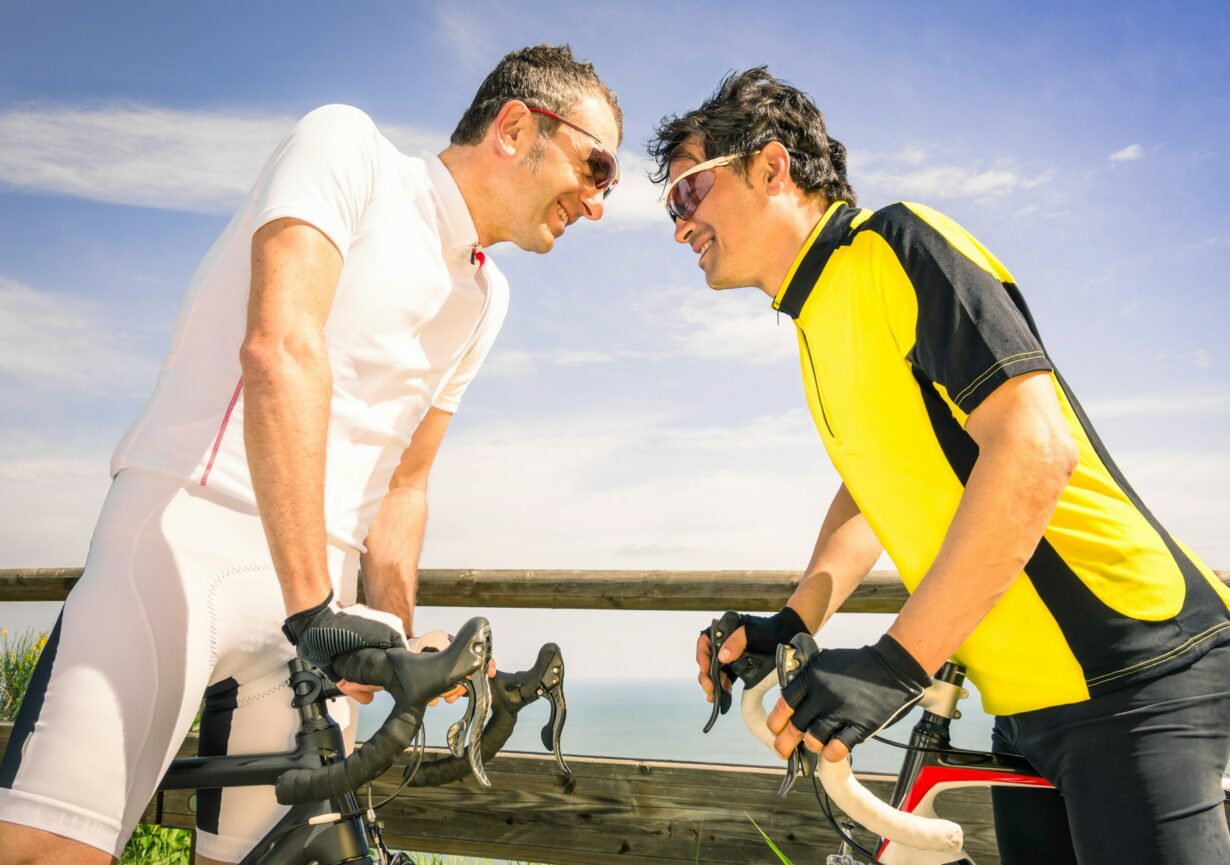Across the globe, fitness is celebrated in a myriad of ways, often reflecting cultural traditions and values. These unique fitness challenges not only promote physical health but also foster community and connection among participants. From traditional dances to ancient martial arts, each activity offers distinct health benefits. This article explores various fitness challenges around the world, delving into their origins, practices, and how they contribute to well-being.
1. The Dance of Life: Capoeira in Brazil
Capoeira, a Brazilian martial art that combines elements of dance, acrobatics, and music, offers a vibrant way to stay fit. Originating among enslaved Africans in Brazil, capoeira was developed as a means of self-defense disguised as a dance to avoid detection. Participants engage in a game called “jogo” within a circle of spectators, known as the “roda.”
1.1. Physical Benefits of Capoeira
Capoeira is a full-body workout that enhances strength, flexibility, and coordination. The fluid movements require agility and endurance, making it an excellent cardiovascular exercise. Regular practice helps improve balance and posture, as participants constantly shift their weight and perform dynamic kicks and spins.
Moreover, capoeira’s emphasis on improvisation and rhythm stimulates mental engagement. The practice encourages creativity and quick thinking, as players must anticipate their partner’s movements while expressing themselves through dance. This blend of physicality and artistry makes capoeira a holistic fitness challenge that nurtures both body and mind.
1.2. Community and Connection
Beyond physical benefits, capoeira fosters a sense of community. Classes often include participants of all ages and backgrounds, creating an inclusive environment. The shared experience of learning and performing capoeira builds strong bonds among practitioners, promoting social well-being.
Furthermore, the music played during capoeira sessions, typically involving traditional instruments like the berimbau and pandeiro, enhances the experience, adding a cultural and emotional dimension to the workout. Participants often feel a sense of belonging and pride as they engage in a practice that celebrates their heritage and history.
2. The Strength of Tradition: Kabbadi in India
Kabbadi, a traditional contact sport popular in India and surrounding regions, showcases physical strength, strategy, and teamwork. The game involves two teams, with one side sending a “raider” to tag opponents while holding their breath and chanting “Kabbadi.” The objective is to return to their half without being tackled.
2.1. Physical Conditioning through Kabbadi
Kabbadi requires intense physical exertion, incorporating sprinting, dodging, and grappling. Players develop muscular strength, endurance, and agility as they engage in quick bursts of activity. The sport enhances cardiovascular health, making it an effective way to improve overall fitness levels.
In addition to physical conditioning, kabbadi promotes mental toughness. Players must strategize and make split-second decisions during the game, fostering cognitive skills such as focus and anticipation. The competitive nature of kabbadi encourages individuals to push their limits, building resilience and determination.
2.2. Cultural Significance and Community Engagement
Kabbadi is deeply rooted in Indian culture and often plays a role in local festivals and celebrations. The sport brings communities together, fostering camaraderie and sportsmanship. Many regions host kabbadi tournaments, creating opportunities for social interaction and community bonding.
Furthermore, kabbadi promotes inclusivity, as it is accessible to people of various ages and fitness levels. The communal aspect of the sport encourages teamwork, instilling values of cooperation and mutual support among participants. This social dimension enhances the overall fitness experience, emphasizing the importance of connection and shared goals.
3. The Strength of the Mountains: Highland Games in Scotland
The Highland Games, a traditional Scottish festival, celebrate strength, skill, and cultural heritage. These games feature a variety of events, including the caber toss, hammer throw, and tug-of-war. Participants, known as athletes, showcase their strength and endurance in front of enthusiastic crowds.
3.1. Strength Training and Physical Fitness
The events in the Highland Games demand significant physical strength and power. Training for these challenges involves weightlifting, conditioning, and specific skill development. Athletes build core strength and muscular endurance, crucial for performing tasks like lifting heavy weights and executing throws.
Moreover, the Highland Games promote cardiovascular fitness through the combination of intense bursts of activity and recovery periods between events. As participants compete in multiple events throughout the day, they improve their stamina and overall physical condition.
3.2. Cultural Heritage and Community Spirit
The Highland Games are not just about competition; they celebrate Scottish culture and community spirit. Traditional music, dance, and attire enhance the festive atmosphere, creating a unique experience for both participants and spectators. The games often attract large crowds, bringing together families and communities to celebrate heritage and local pride.
Furthermore, the sense of camaraderie among participants fosters lasting friendships and connections. Many athletes return year after year, strengthening community ties and promoting the importance of preserving cultural traditions.
4. The Art of Movement: Tai Chi in China
Tai Chi, a Chinese martial art known for its slow, flowing movements, emphasizes balance, flexibility, and mindfulness. Originally developed for self-defense, Tai Chi has evolved into a practice focused on promoting health and well-being.
4.1. Mind-Body Connection and Health Benefits
Tai Chi combines gentle physical exercise with meditation, making it a powerful tool for improving mental and physical health. The slow, deliberate movements enhance flexibility, improve posture, and promote relaxation. Practicing Tai Chi regularly can reduce stress levels and anxiety, providing a sense of calm and clarity.
Research has shown that Tai Chi can improve balance and coordination, reducing the risk of falls, especially in older adults. The focus on breath control and mindfulness enhances overall body awareness, contributing to improved mental clarity and emotional resilience.
4.2. Community Practice and Connection
Tai Chi is often practiced in groups, fostering a sense of community among participants. Group classes provide opportunities for social interaction and support, creating a shared space for learning and growth. Many practitioners find joy in connecting with others who share similar interests and values.
In parks and public spaces across China and other countries, you can witness groups practicing Tai Chi together, creating a serene and harmonious atmosphere. This communal practice not only strengthens individual connections but also promotes a sense of belonging within the larger community.
5. The Power of Team Spirit: Ultimate Frisbee Worldwide
Ultimate Frisbee, a fast-paced team sport played globally, combines elements of soccer, basketball, and football. Teams aim to score points by catching a frisbee in the opposing team’s end zone, promoting teamwork, strategy, and athleticism.
5.1. Physical Fitness Through Team Sports
Ultimate Frisbee requires a blend of aerobic endurance, speed, and agility. Players sprint, cut, and leap to catch the frisbee, providing a comprehensive workout that enhances cardiovascular health and muscular strength. The nature of the game, with continuous movement and quick transitions, keeps players engaged and challenged.
In addition to physical fitness, Ultimate Frisbee promotes communication and teamwork. Players must work together to strategize and execute plays, fostering collaboration and camaraderie. The sport encourages individuals to develop leadership skills and build trust within their teams.
5.2. Inclusivity and Community Building
Ultimate Frisbee is known for its inclusive culture, welcoming players of all skill levels and backgrounds. Many communities organize recreational leagues, providing opportunities for individuals to connect and participate in a supportive environment.
The sport also emphasizes the “Spirit of the Game,” a code of conduct that encourages fair play, respect, and self-officiating. This unique approach fosters a positive atmosphere, allowing players to enjoy the game while building friendships and connections.
6. Conclusion
From capoeira in Brazil to kabbadi in India, fitness challenges around the world celebrate cultural diversity while promoting physical and mental well-being. These unique traditions not only enhance individual health but also foster community spirit and connection. By embracing these diverse fitness practices, we can learn from one another and enrich our lives through movement, culture, and shared experiences. So, whether you’re participating in a Highland Games event or trying your hand at Tai Chi, remember that fitness is not just about physical strength; it’s also about the bonds we create and the joy we find in movement.


